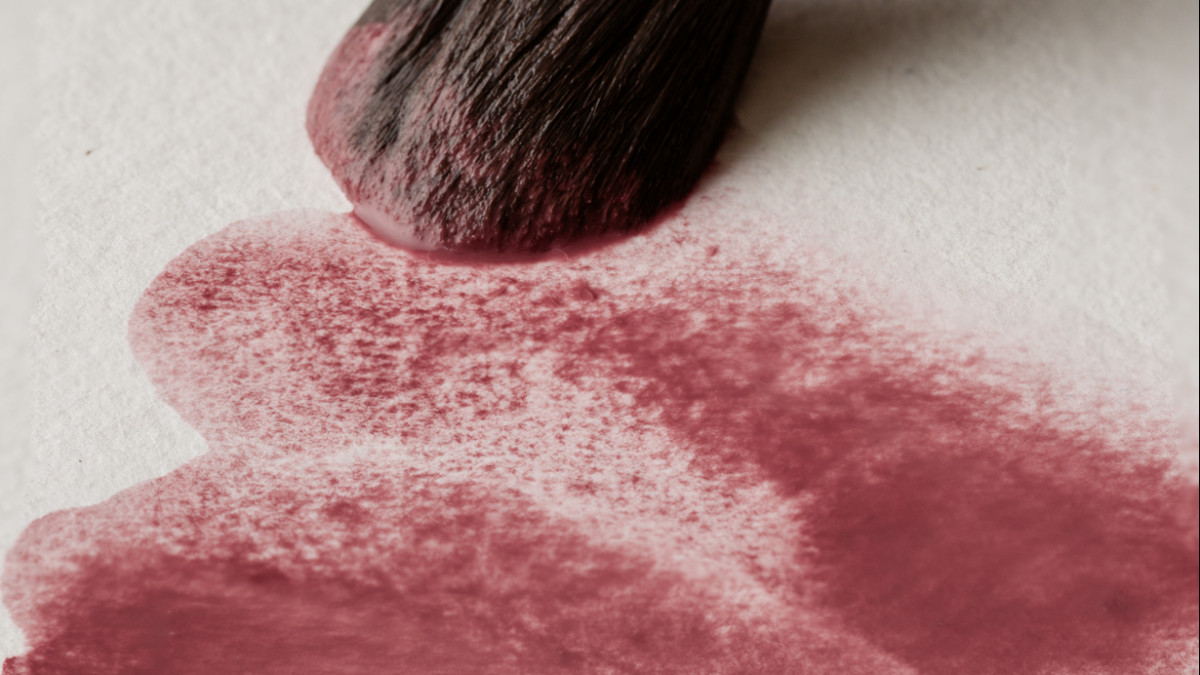Potter's Pink - why it has such a special role to play in a watercolour palette.

It was invented by an unknown potter in Staffordshire, UK at some point around 1790, and was introduced to the artist market as ‘pinkcolour.’
Its impact in the field of watercolour was significant, and for years it was the only lightfast pink pigment available to watercolour artists.
We can see it’s granular pink blush in the below painting by James Smetham (1821-1889)

Potter’s Pink is actually an artificial mineral pigment made by combining tin oxide, alumina, chromium oxide, lime, and quartz at a high temperature. The resulting mixture is thoroughly washed and dried, creating a lightfast, earthy pink. Its quartz content means that the pigment particles are quite hard and irregular, and this contributes to the granular, textural quality the pigment produces. Today it is still mostly used as a glaze for ceramics, but it is also a popular colour on artist palettes– particularly for watercolour artists.
Is Potter’s Pink Only Available in Watercolour Ranges?
Potter’s Pink is limited to watercolour ranges with few exceptions– Winsor and Newton offer an acrylic that uses the pigment PR233. Daniel Smith make a paint named Potter’s Pink, but they use the Quinacridone pigment PV19 in place of the genuine PR233 pigment. Sometimes it is the case that certain pigments are incompatible with certain binders (Prussian Blue is an example), but there is nothing I can find which indicates that PR233 is incompatible with any binder. The answer could be that it is simply a rather dull pigment– it is murky, opaque, and weak in tinting strength, so perhaps this makes it unattractive to artists working in oil and acrylic. Potter’s Pink’s very particular characteristics, however, are revealed when it is used in watercolour.
Why is it so useful in watercolour?
Potter’s Pink really is a super-granulating pigment. Granulation is a watercolour effect that certain pigments exhibit when applied to paper with lots of water. Pigments with large and/or irregular pigment particles settle unevenly into the texture of the paper, creating a grainy, mottled effect that some artists love. It can be harnessed to represent natural textures, evoke a sense of depth, or simply as a point of characterful interest in a painting. Granulation can be increased by painting on rough paper, and using lots of water in the wash.
The characteristic of granulation is not evenly spread across all colours. For example, there are lots of granulating blues like Ultramarine, Cobalt Blue and Cerulean Blue. There are also plenty of granulating greens, with examples like Cobalt Green and Viridian. But within the red spectrum, there are very few granulating colours. This is where Potter’s Pink becomes a watercolourist’s secret weapon.
In this case, Potter’s Pink low tinting strength is actually its superpower. Adding just a little to a red pigment doesn’t significantly change the colour, but it contributes its granulating texture to the otherwise non-granulating pigment. In this way, it can be used as a kind of granulation medium.
Categories: All about paint
 Nicola Blakemore
Nicola Blakemore